

Sustainability is one of the most urgent, present issues of our times. Anna Grinberga and Dina Seitkaziyeva, alumnae from Istituto Marangoni in London, know it well. After finishing their Master’s degree in Fashion and Luxury Brand Management, they told themselves that the planet did not need another new brand. But they wanted to make a difference by linking words like climate-conscious, ecological, ethical and sustainable to a business model our planet really needs.
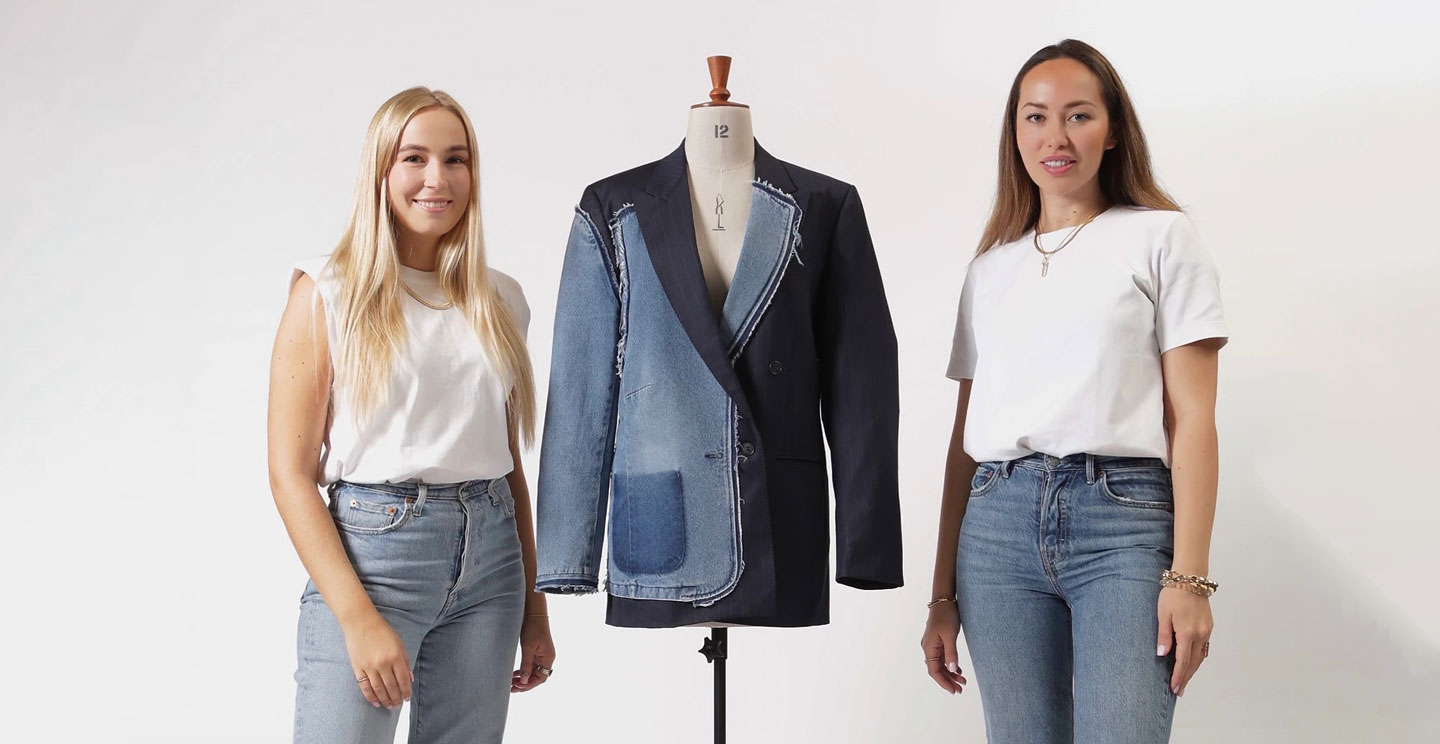
The Founders of The Archive Closet London
Thus, Grinberga and Seitkaziyeva established The Archive Closet London to create “a clothing line for a better tomorrow” while working exclusively with premium vintage garments to make today’s eco-friendly must-haves from something long forgotten.
“It is exciting to know that your new and unique blazer or dress lived a previous life,” claims the website The Archive Closet addressing their community. “We are against the throwaway culture. All our pieces are 100% upcycled from all the materials to belts, buckles, and buttons.”
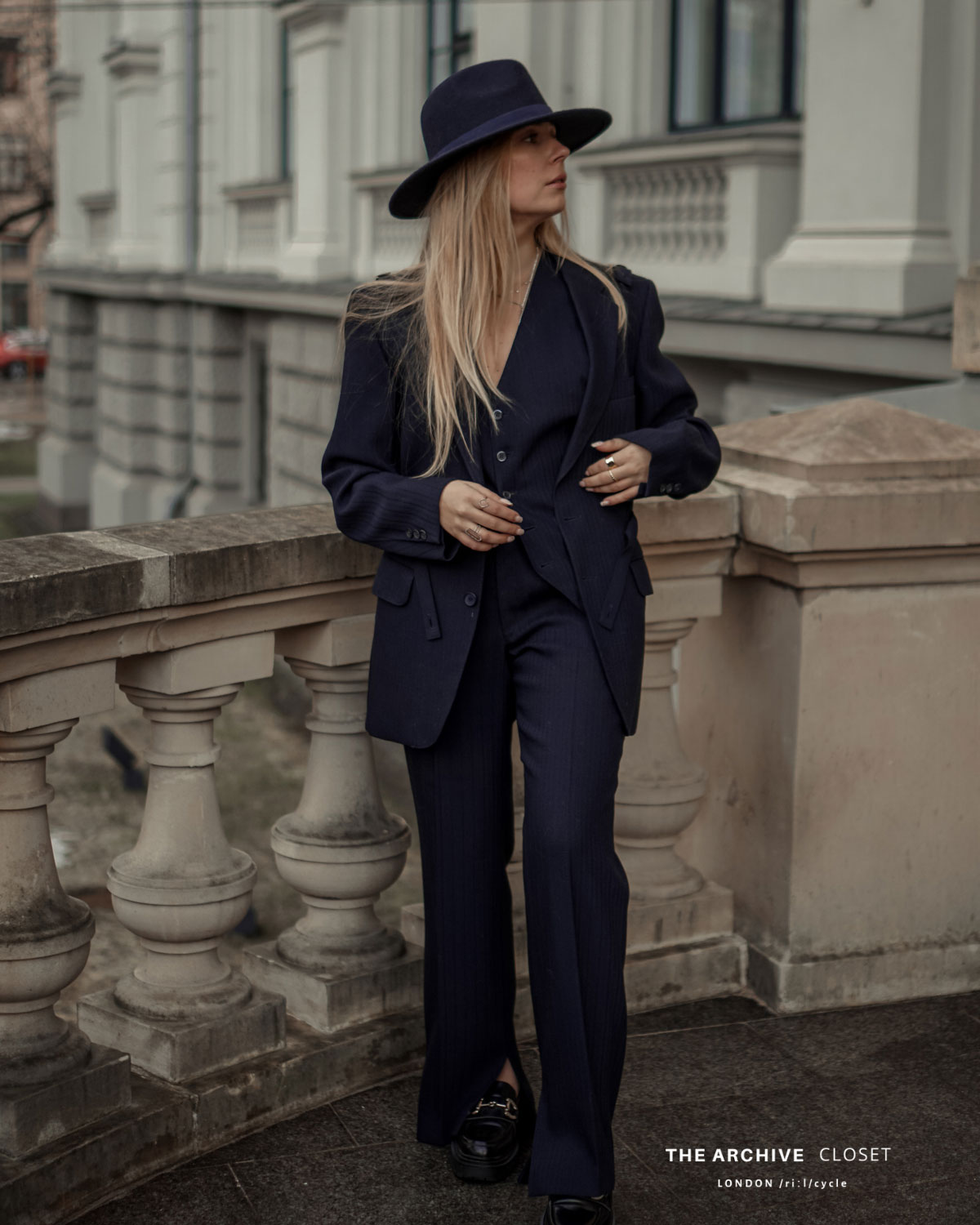
Criss Cross Suit by The Archive Closet London
Dina Seitkaziyeva, after high school in Almaty, Kazakhstan, took a Bachelor’s degree in Business Administration in Dubai. She then completed a Master’s programme at Istituto Marangoni in London, as did Anna Grinberga, who studied International Marketing and Advertising in Riga after a BA at the Latvian capital’s School of Law.
As graduates of Istituto Marangoni, the two London-based founders have worked tirelessly to “make sustainability and the circular business model the core of The Archive Closet from day one, while also delivering style to shoppers worldwide.”
While creating seasonless, sizeless and gender-fluid collections, all presented in drops, Anna Grinberga and Dina Seitkaziyeva give rising young designers and retired seamstresses the chance to come up with such one-off pieces.
As two green innovators leading a new generation of sustainability-conscious creatives, Grinberga and Seitkaziyeva stand as a duo coming together to elevate environmental goals beyond profits. Below, they tell us about their sustainability journey.
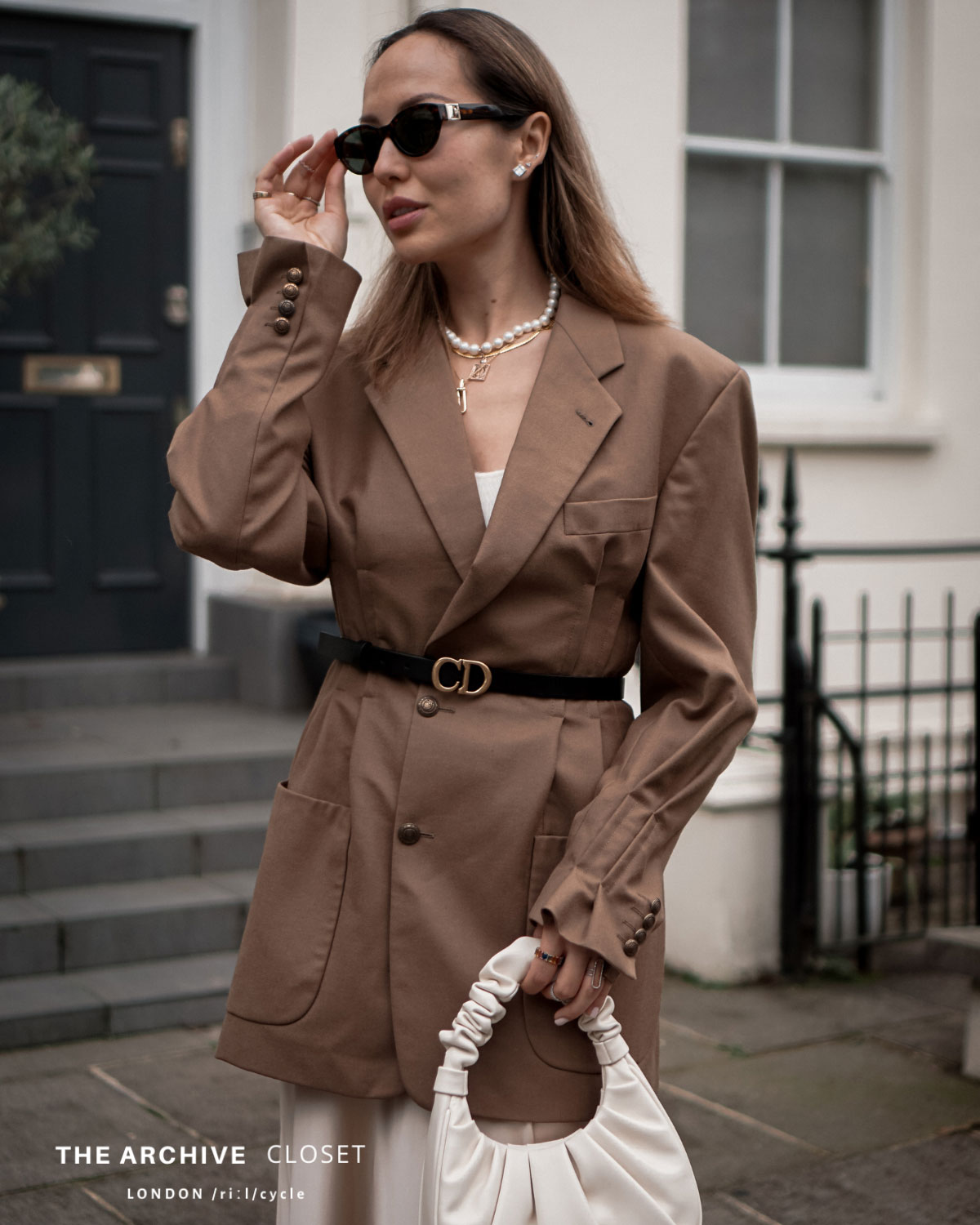
The Hourglass Brown Blazer by The Archive Closet London
You met at Istituto Marangoni London during your studies before creating a business together. How did this partnership come to be?
Anna Grinberga: We both love fashion – that was probably the first thing that bonded us, but we realised that there is a huge waste, overconsumption and overproduction problem and a gap in the industry, which needs to be filled – i.e. closing the loop.
Dina Seitkaziyeva: We both had a similar dissertation topic on circular economy and secondary markets, and one thing led to another. We had a conversation after graduation and realised that we have a common goal and interest in the fashion industry and that there is a synergy in this partnership.
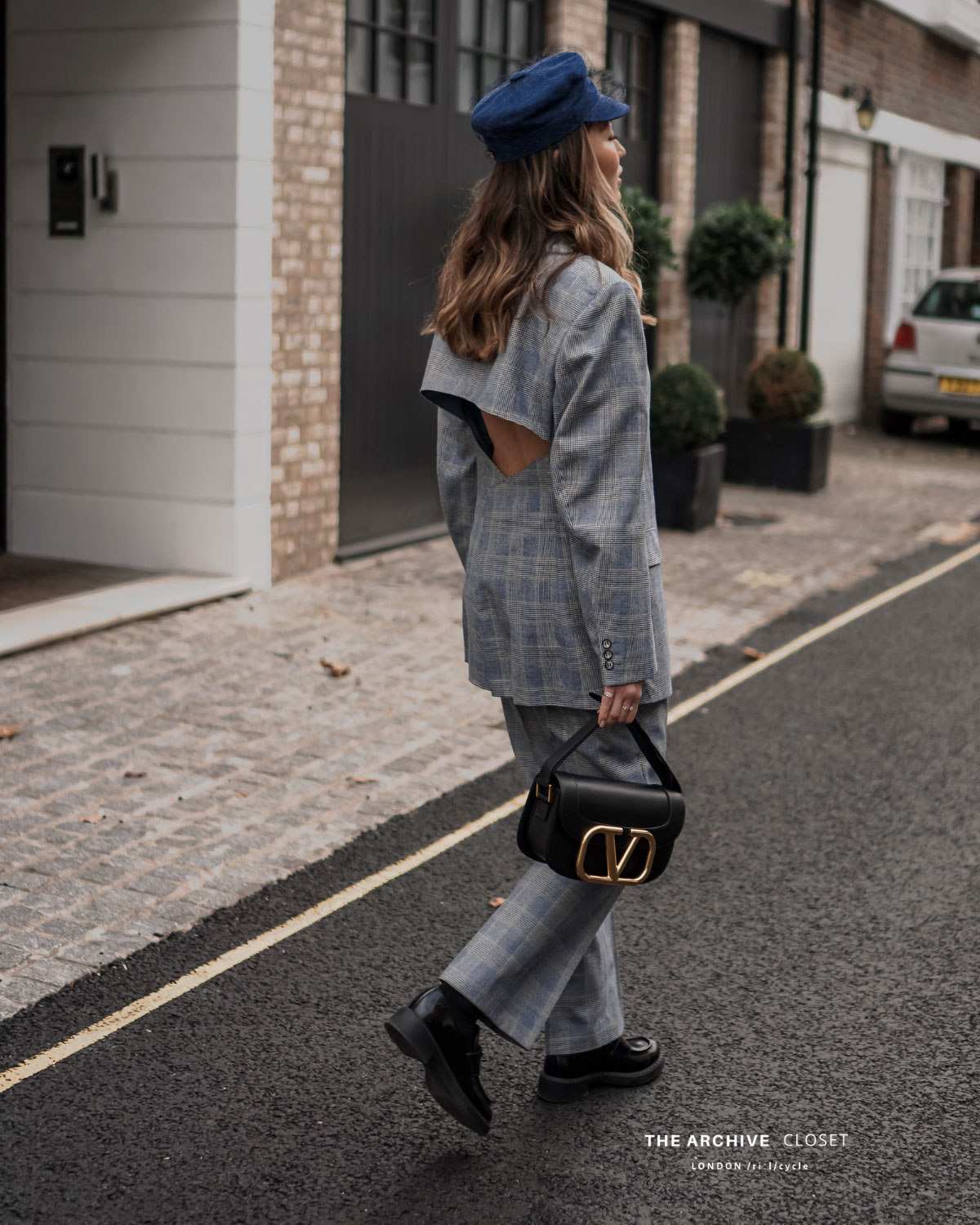
The Moon Suit by The Archive Closet London
A big part of your business and brand philosophy is centred around sustainability and responsible business practices. Was this focus something you acquired and developed during your studies in London?
A.G: I can only speak for myself, but before attending IM or moving to London, I wasn’t too invested in sustainable lifestyle practices. I always loved vintage, especially handbags and attire from my mom, but I never thought it would escalate to a business venture. I always knew that the fashion industry was very polluting, so much that I wanted to write my bachelor’s dissertation about it when I was in law school, but that never connected in my mind to my personal consumption patterns. Everything changed when I started attending Istituto Marangoni. I realised that it was actually cool to be environmentally conscious, and everyone around me supported this movement and did the same.
D.S: I grew up in Dubai, a brilliant and visionary city. It is a city of innovation, where everything is modern and fast-changing, from infrastructure to skyscrapers, from luxury shopping malls to luxury vintage stores. As a visionary hub, it has always had an eye for sustainability, from local artisans to fully solar-powered sustainable housing estates. This has ignited a spark of interest and fascinated me while studying for my Bachelors. On the fashion side, I have loved luxury resale since its early days (2009-2010) while adding and refining my mother’s vintage handbag collection. Moving to London and studying at the IM strengthened my interest in sustainability. As time has proven, here we are on an exciting new venture with The Archive Closet London.
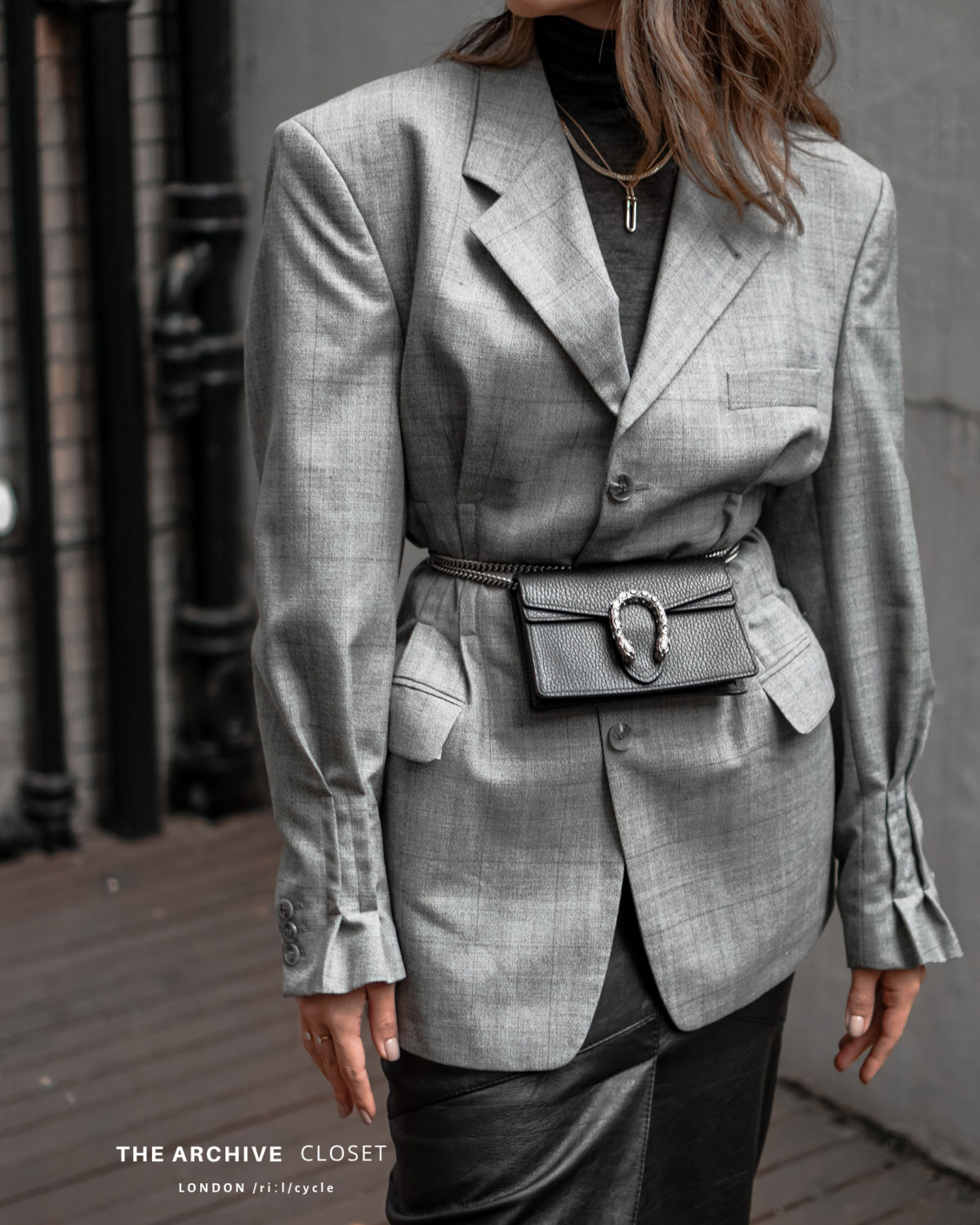
The Hourglass Grey Blazer by The Archive Closet London
All your items are customised; do you design them, or what is the process like?
A.G and D.S: Even though we both have a business background, we have a great sense of style, so we come up with the designs and concepts, but we have our production done by tailors. Not all our pieces are produced by professional tailors because our mission is to allow emerging young designers and retired seamstresses to create our unique items. This is why we wanted to give each upcycled piece a more personal touch so that everybody could feel and see the unique approach of the designer who made that garment. The tailor’s handwritten initials are on each item’s tag.
You have chosen to work with existing designer pieces instead of unbranded stock. Does this affect the creative upcycling process?
A.G and D.S: We work with both luxury and unbranded stock, and the main criterion is good vintage quality. Our sourcing and selection of pieces is a careful process due to the vintage nature of the garments. We recently launched the Designer Upcycled category and are excited about it. Still, it does not affect our creativity as all our designs are unique and different from what the fashion market offers. Covid-19 has created a new trend of “less is more,” going back to what we have and reinventing it. Even luxury designers such as Dior and Chanel, to name a few, went back to their archives and reproduced designs from the past instead of creating new collections. We see more and more celebrities on the red carpets wearing iconic dresses from the 1990s or early 2000s by Versace, Alaia, Chanel and so on. Hence, we see great potential in the Designer Upcycled category of The Archive Closet.
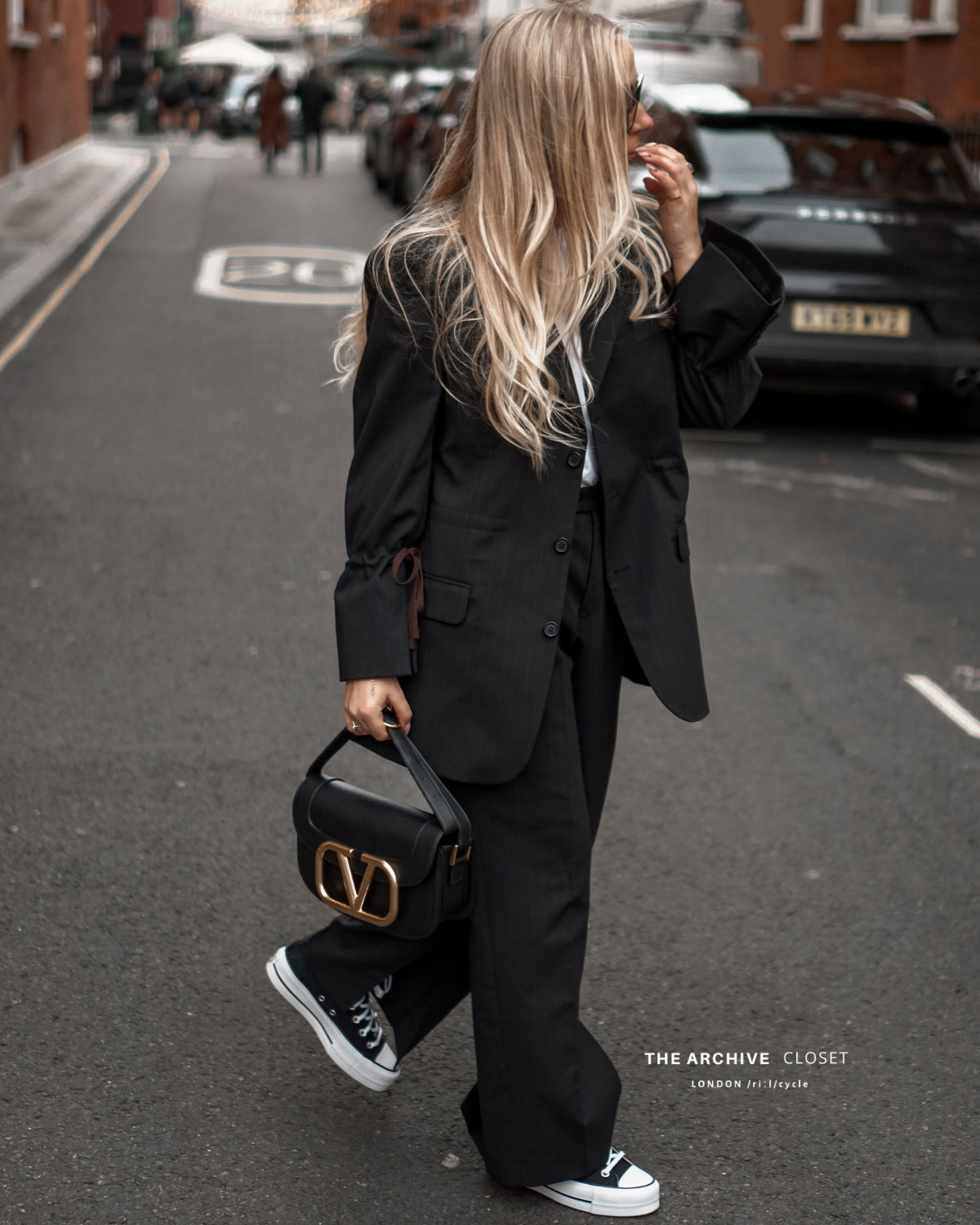
The Ties Suit by The Archive Closet London
Due to the nature of your business, you constantly work on one-off pieces. How do you envision the brand scaling up in this case?
A.G and D.S: Because of the very nature of vintage garments, all pieces are unique and cannot be mass-produced, but as our experience grows and we develop a good relationship with our more stable tailors, we have worked out specific guidelines for certain types of garments that apply to our signature models, so scaling up becomes a possibility.
What’s next for you both and your business?
A.G and D.S: Our goal is to dent the traditional fashion production and consumption model. Our big goal is to grow our sustainable community and reach even more consumers to change their shopping and lifestyle habits. One of our missions is to educate our people on sustainable and circular practices.
Charlotte Valkeniers
Editiorial team, London


